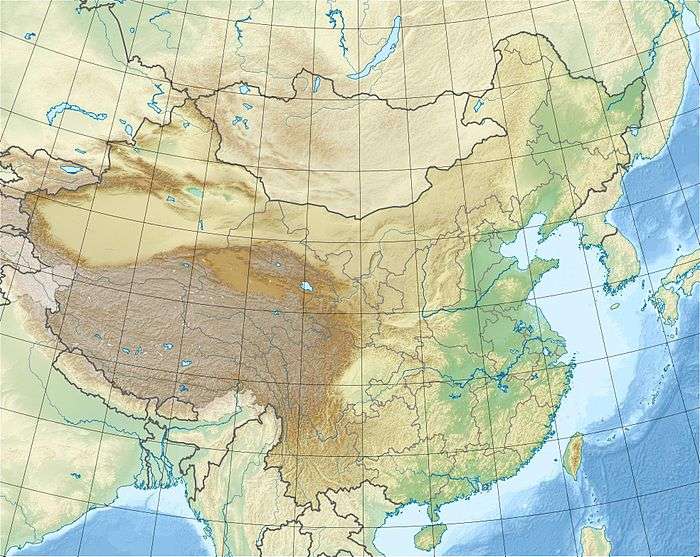Greater Khingan
| Greater Khingan Range | |
|---|---|
|
大兴安岭 | |
|
The Yalu river in the Greater Khingan range | |
| Highest point | |
| Elevation | 2,035 m (6,677 ft) |
| Coordinates | 49°22′57″N 123°09′24″E / 49.3823728°N 123.1567383°ECoordinates: 49°22′57″N 123°09′24″E / 49.3823728°N 123.1567383°E |
| Geography | |
 Greater Khingan Range Located in Northeast China | |
| Geology | |
| Mountain type | Tilted block faulting |
The Greater Khingan Range (simplified Chinese: 大兴安岭; traditional Chinese: 大興安嶺; pinyin: Dà Xīng'ān Lǐng; IPA: [tâ ɕíŋ.án.lìŋ]; Mongolian: Их Хянганы нуруу, Ih Hyangani’ nurū; Manchu: Amba Hinggan), is a volcanic mountain range in northeast China. The range extends roughly 1,200 kilometres (750 mi) from northeast to southwest.[1]
Geography
The area has an elevation of 1,200 to 1,300 metres (3,900 to 4,300 ft), and the highest peak Huanggangliang reaches 2,035 metres (6,677 ft). The range is much broader in the north, at 306 kilometres (190 mi), than it is in the south, at 97 kilometres (60 mi). It was formed during the Jurassic Period (roughly 200 to 145 million years ago), and is essentially a tilted fault block; its ancient fault line forms its eastern edge, facing the Northeast China Plain. The ranges are markedly asymmetrical, with a sharp eastern face and a more gentle western slope down to the Mongolian Plateau at an elevation of 790 to 1,000 metres (2,590 to 3,280 ft). The eastern slopes are more heavily dissected by the numerous tributaries of the Nen and Songhua rivers, but generally the mountains are rounded with flat peaks. The ranges are composed largely of igneous rocks (i.e., formed through the solidification of magma).
Population
Its slopes are a relatively rich grazing area. The Khitan people lived on the eastern slopes[2] before establishing the Liao Dynasty in the tenth century. On the western slopes lived the nomadic people, who raised sheep and camels and used the Mongolian plateau for their pastoralist economy.[2]
Much of the area is inhabited by peoples speaking Mongol and, in the north, Tungusic languages, such as the Oroqen people and the Evenk people. Logging continues to be the major economic activity.
See also
References
- ↑ "The Greater Khingan range in winter". China Daily. 28 December 2015. Retrieved 30 December 2015.
- 1 2 Mote, F.W. (1999). Imperial China: 900–1800. Harvard University Pres. p. 32s. ISBN 0-674-01212-7.
This article incorporates text from a publication now in the public domain: Wood, James, ed. (1907). "article name needed". The Nuttall Encyclopædia. London and New York: Frederick Warne.